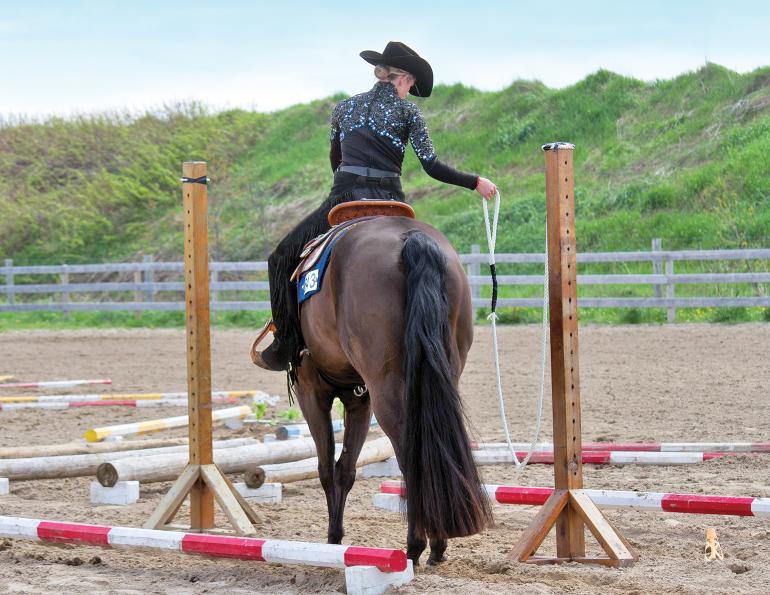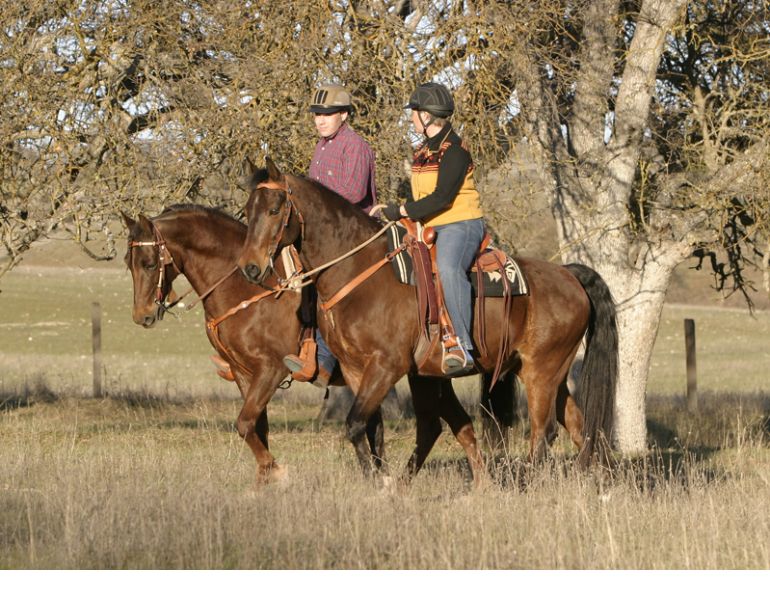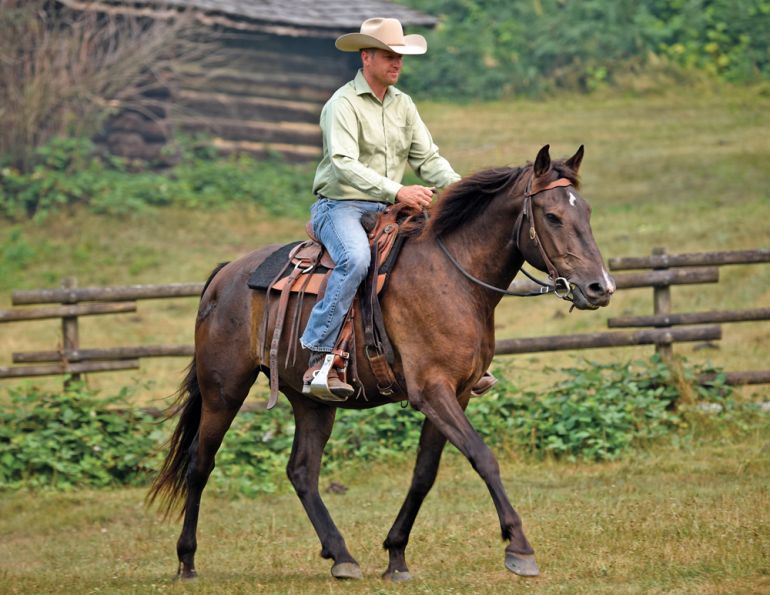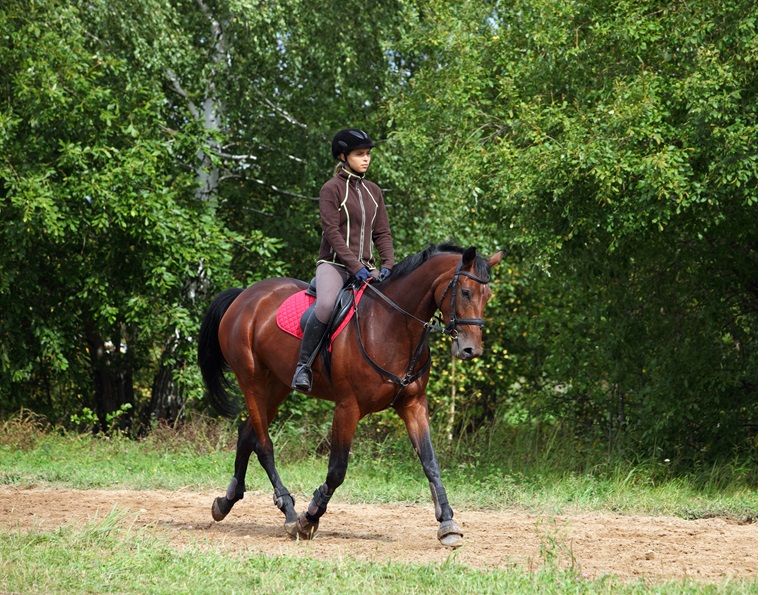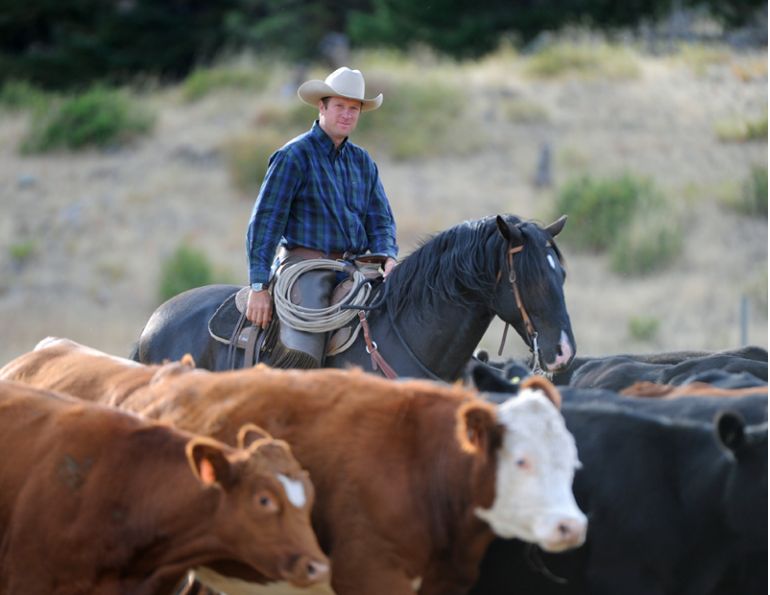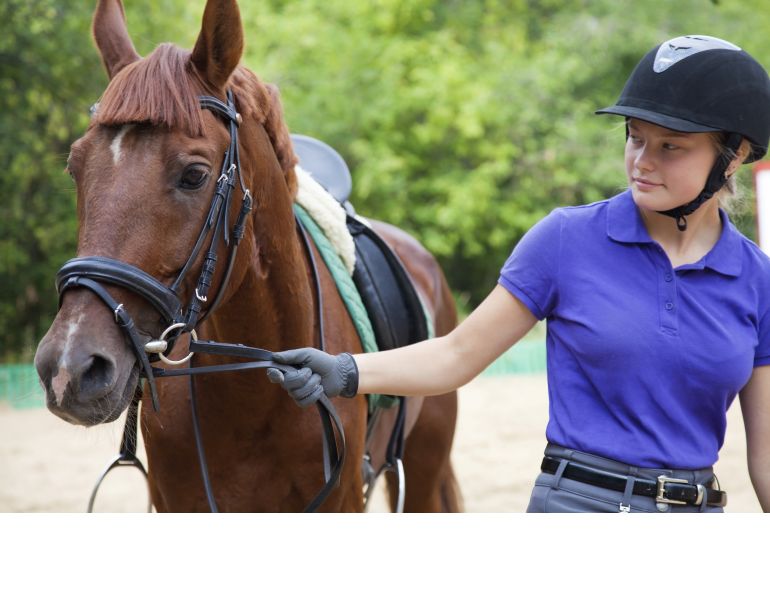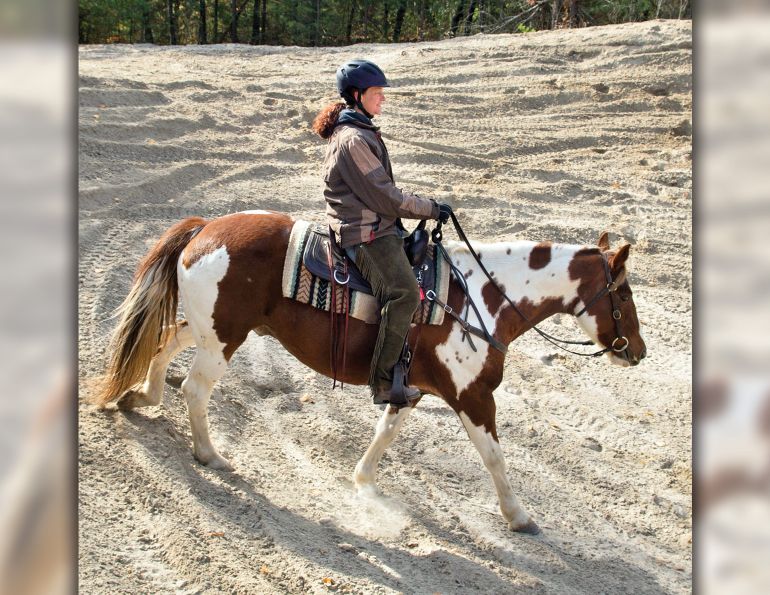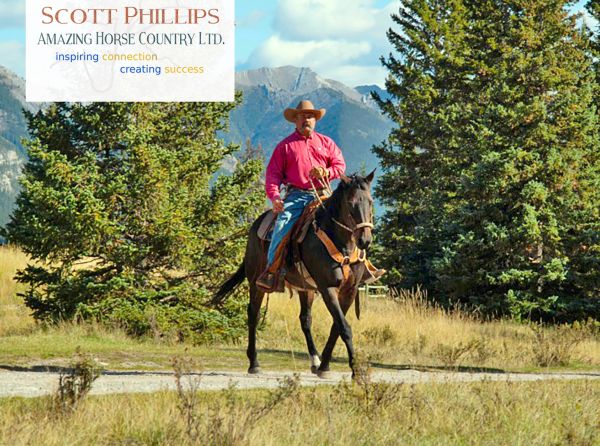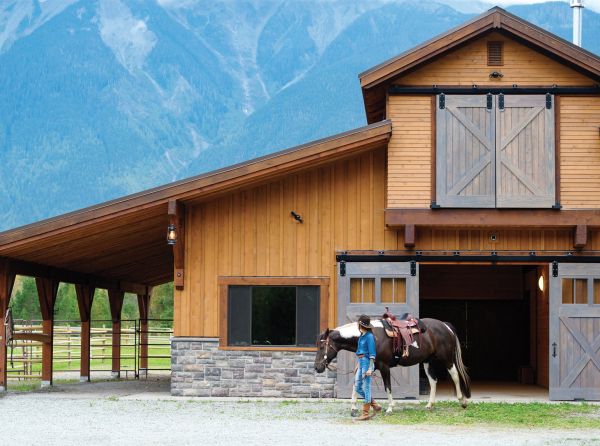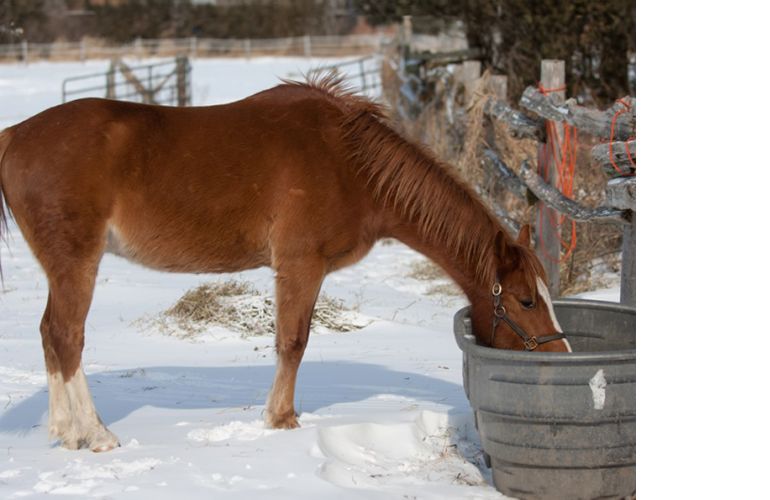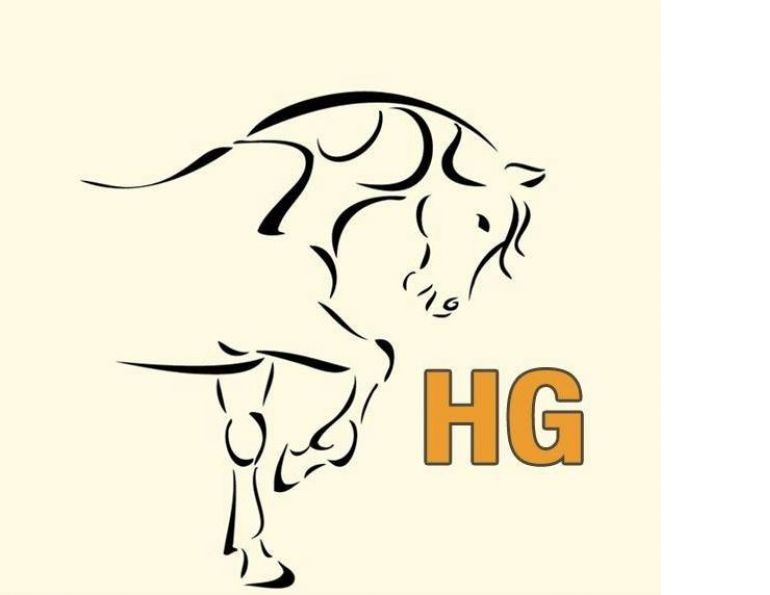…in the schooling ring and in the show ring
By Lindsay Grice, Equestrian Canada coach and judge
Essentially, a gate is a transition from here to there. It’s a transition from one pasture to another, replicated in competition. Learning to work a gate can be part of your horse’s training transition into a more attentive, patient, and handy partner.
I use gate training as a transition in the rhythm of a schooling session. For example, after canter work, a slower maneuvering task such as a sidepass, backing obstacle, or gate provides a “commercial break.” The value of teaching your horse the steps to work a trail gate is comparable to the benefit of phonics in learning to read. Mastery of maneuvering his body parts and controlling his feet as well as the patience and listening skills your horse will develop will spill over into other dimensions of his training.
Beyond its cross-discipline educational benefit, competing in trail and other obstacle classes is a lot of fun and growing in popularity. As a judge, I assess and score riders working gates in show trail and ranch classes, Mountain Trail, Working Equitation and Extreme Cowboy. The common denominator across disciplines is style — finesse, flow, and efficiency.
Working a Gate: 3 Essential Ingredients
1. Patience: Maneuvering obstacles — gates, sidepassing, and backing obstacles — require slow training, patience, and pausing between steps. Riders tend to find them boring and consequently, many just don’t practice them (until they get to the horse shows). Moreover, horses are inclined to want to get maneuvering obstacles over with. Not because they’re boring, but because they’re scary.
Naturally, a horse initially feels vulnerable while parked close beside a barrier while his rider reaches down to move it. Horses don’t like to feel trapped between the rider’s leg and an impediment to escape. I want my horse to learn that the gate is a happy place to be — a place to catch his breath, not hold his breath. Don’t work on a gate when your horse is fresh. Wait until he’s relaxed in your schooling session and welcoming a break.
Wait between each step until the horse is completely neutral and not anticipating what comes next. Gradually, you can shorten the wait time until it’s no longer visible — the steps become steady, but the pause is still understood. In other words, the horse never initiates a step but instead, waits to be asked.
Related: More Fun! And Why it's Important
2. Communication clarity: Vague cues will only add to your horse’s feeling of vulnerability. Don’t make your horse guess what you want him to do with his feet. As with all training, start with clear distinction between your leg positions and rein signals in the skill acquisition phase. These aids can soften and become more subtle as your horse gets the idea.
3. Control of the horse’s feet: Don’t think of “riding through the gate,” but rather, as a sum of the multiple pieces involved. Before my students approach a gate, we have these five pieces firmly in place: turn on the forehand, turn on the haunches, sidepass, step-backward, and step-forward. If these movements aren’t deeply learned (working any time, any place, without anticipation), attempting to perform them with a gate in hand stirs up a mess of tension and confusion in a horse.
As a judge, I see tension and confusion at the trail gate more than I’d like at open shows. A competitor enters the trail class “exam” without having studied enough at home. With rusty lateral cues, they’re unable to step closer to the obstacle so they lean over and reach for the rope. The horse is unnerved and backs away as the rider valiantly holds on to the rope. Alas, without a reliable step-forward cue, the horse stays in reverse, the rope stretching more taught as I dictate accumulating penalties to my scribe. Occasionally, I must interrupt — LET GO! — before the gate starts to teeter and topple into a train wreck.
Related: The 21st Century Cowboy
Getting started: Gates Step-By-Step
I start green horses or novice riders on a rope gate. It’s pliable and less confining than a solid obstacle. We’ll begin working the gate with the rider’s dominant hand, though of course you’ll need to be able to operate a left- or right-handed gate. That said, in the steps to follow, I have a solid gate in mind.
1. Halt with the gate opening near your leg, close enough that you don’t have to reach for it. Leaning to the side puts you and your horse off-balance, resulting in an unintentional sidestep to rebalance. Reaching may cause your leg to slip into your horse or your rein hand to give unintentional signals as you stretch for the latch. Mixed messages stress horses. Not only that but if you’re off-balance and he spooks away from the gate, you’ll be left near it….in the dirt.
Related: Does Your Horse Need a Lot of Leg?
2. Hesitate until your horse is relaxed, then back a few steps, sliding your hand along the top of the gate until your horse’s head is past the gate opening.
3. Open the gate away from you so the horse sees a way through it and discovers that the gate will move.
4. With the gate open, step your horse forward through the opening. Once his shoulders go through, pivot them around the opening with your outside leg at the girth. Eventually, as you refine the process, wrap your horse around your inside leg as you step to create a nice arc as he follows his nose.
5. To close, press your outside leg at the girth to sidepass. Back a few steps to latch the gate.
Variations: Mix up the routine to be prepared for whatever type of gate is asked for in competition.
- Sidepass away from the gate to create an opening for a pull gate.
- Work the gate from either side, using either hand to hold and latch it.
- Back through the gate. You will need a confident turn on the forehand to step the hindquarters around the opening.
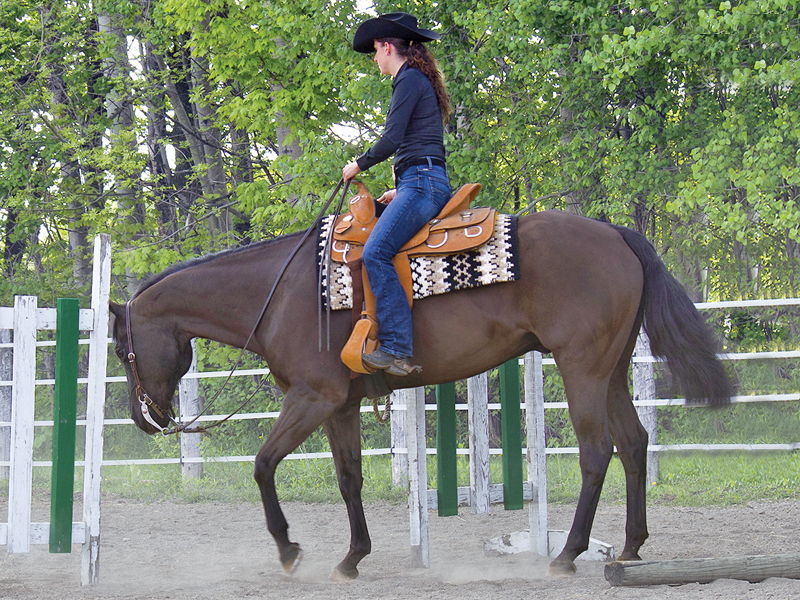
Green horses or novice riders are best started on a rope gate. It’s pliable and less confining than a solid obstacle. Distinction between leg positions is key with green horses. Note this rider’s leg is clearly signaling at the girth to move the horse’s front end around. Photo courtesy of Lindsay Grice
Gates in Competition – Similarities and Differences
In competitive show trail classes, one typically finds a rope gate. For ranch horse events, it’s more often a solid gate — wood or metal pipe. In Working Equitation, a solid gate is preferred for the Ease of Handling phase, whereas a rope gate is used in the Speed phase.
Which hand you open the gate with depends on how the pattern is set — to which side of the obstacle the pattern takes you. In Working Equitation, the exhibitor must use the same working hand to negotiate obstacles throughout their pattern. This may necessitate operating the gate with your non-working hand and backing through.
Related: Horsemanship: Exploring Leg-Yield with Jec Ballou
As a rule of thumb, approach the gate in trail classes in the most efficient manner to maintain the flow of the course. Though some ranch competitors choose to demonstrate their horse’s handiness by sidepassing a few steps to the gate, I coach my show trail class competitors to halt directly beside the opening to eliminate unnecessary steps. Working Equitation specifies a perpendicular approach, transitioning downward to the walk between the markers and swinging the horse’s quarters in a smooth turn on the forehand to stop parallel to the obstacle.
From the Judge’s Card
As a judge, in all competitive trail-type events I must assess for each obstacle a mark for style, with deductions for errors or penalties.
Maneuvre score: The maneuvre or obstacle score represents the style or quality of the obstacle execution. A perfect obstacle score for Working Equitation, Mountain Trail, or Extreme Cowboy is 10. A top mark for obstacle execution in show or ranch trail classes is 1 1/2.
- Efficiency means that you don’t let the cows out! Imagine cattle crowding around, waiting for the gate to open and a chance to file through. The opening’s got to be wide enough to avoid catching the rider’s leg and narrow enough for only the equine, not the bovine, to pass through. Efficiency means no wasted steps or extra maneuvering.
- Flow. Riding through a gate smoothly, without hesitation in the stride or resistance to the aids, could earn a top score on an individual obstacle.
- Finesse. Willingness and softness in expression is the ideal. Tension such as gapping the mouth in response to bit contact or counter-bending in response to a neck rein cue will result in a lower score. Anything that makes the maneuvre look ugly — swishing tails, pinned ears, or rushed movements — will earn the lowest obstacle marks.
Penalties: Check your equine association’s rule book for the full penalty list, but here are some highlights.
In Working Equitation, hitting the gate, inattentiveness while the rider latches and unlatches, or stepping back will earn a 4.5 or less out of a possible perfect 10.
Related: Trail Riding Etiquette
In show and ranch trail classes, penalties are more specific.
- Backing, balking, or bucking — Any time your horse says “no,” you’ll have a five-point penalty deducted.
- Snacking on the foliage — Every nibble at the flower decorations or equipment is a one-point error.
- Hitting the standard — A light tick is a half-point penalty; a good clunk is one point; and actually shifting the obstacle or the decorations will cost you three points.
- Letting go of the gate — Five points are deducted. (Plus, the cows escape – and ultimately, that’s the point of the whole exercise).
Keep Your Horse Guessing
Anticipation is the most common gate issue I see as a judge. As a clinician, a frequent horse puzzle I’m asked to help solve is how to untrain a horse that has learned to do the gate on autopilot. Of course, the best way to prevent an unwanted habit is not letting a groove ever get established. Interrupting a horse’s familiar pattern takes time — waiting in between steps until the horse settles and mixing up the routine. Keeping a horse guessing keeps him interested in his job and his expression fresh.
Related: Horsemanship - Are You Riding All Your Gears?
Related: How to Format Your Horse Ride
Main Photo: To navigate this show gate, the rider wraps her horse around her inside leg to create a nice arc as he follows his nose. Riding through a gate smoothly, without hesitation in the stride or resistance to the aids, could earn a top obstacle score. Photo courtesy of Lindsay Grice



